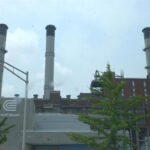CONTACT US
Close
CONTACT US
Close

Imagine if nearly half of New York City lost heat for months during the winter. That’s not the plot of a new survival drama. Such a catastrophe nearly occurred last Christmas, according to an alarming recent report by energy regulators that deserves more attention.
The Federal Energy Regulatory Commission (FERC) and the North American Electric Reliability Corporation last month published a 168-page review of the electricity and natural gas problems during winter storm Elliott last December. It was the fifth time in 11 years that power plant failures caused by cold weather jeopardized grid reliability.
At the same time demand for electricity to heat homes ramped up, many gas generators failed for technical reasons or lack of fuel. Hundreds of thousands of Americans in the southeastern U.S. lost power on Christmas Eve while millions more were urged to conserve power.
It “is especially disconcerting that it happened in the Eastern Interconnection which normally has ample generation and transmission ties to other grid operators that allow them to import and export power,” the report notes. Yet problems cascaded through the eastern U.S.’s interdependent energy systems, which nearly caused New York City’s gas distribution to collapse.
A particular problem was that wells in the Marcellus and Utica shale deposits that supply much of the eastern U.S. with natural gas froze, reducing production by 23% to 54%. While gas supply fell, demand for electricity and heating surged, causing the pressure in interstate pipelines that supply downstate New York to plunge.
New York City utility Con Edison, “given its downstream location near the end of the interstate pipelines, was disproportionately impacted by the deteriorating pipeline conditions, through no fault of its own,” the report says. To restore pipeline pressure, Con Edison curtailed gas to some customers and activated a liquefied natural gas regasification plant.
Otherwise, Con Edison “could have faced an unprecedented loss of its entire system that, in this worst case scenario, would have taken months to restore, even with mutual assistance” while customers “would have been unable to heat their apartments and houses while the outside temperature was in the single digits, for months,” the report says.
Winter storms happen, but U.S. energy systems are becoming less resilient as coal and nuclear power plants shut down owing to competition from heavily subsidized green energy and cheaper natural gas. While gas power is more reliable than wind and solar, icy winter conditions can still cause fuel shortages.
Allowing shale fracking in upstate New York might have mitigated the gas supply shortage at the margin, but former Gov. Andrew Cuomo blocked that. The climate lobby’s antidote is electric heat pumps, but that would have increased strain on an already stressed grid. If New York City relied mostly on electricity for heat, millions could have lost both power and heat during the arctic blast. How’s that for a zombie apocalypse?
The New York Independent System Operator reported this week that the Empire State would need to rely on power plants that can switch to burning oil during the winter into the next decade owing to gas shortages and lulls in offshore wind. Another problem: “EV charging load is higher on colder days due to reduced battery efficiency and reduced EV range in cold temperature.”
You’d think all this would be news given the growing risks of grid failure, but such talk is taboo among those who want the U.S. economy to run solely on electricity driven by wind and solar energy. Don’t say New Yorkers weren’t warned.
Source: WSJ
ENB Top News
ENB
Energy Dashboard
ENB Podcast
ENB Substack
The post New York’s Near Zombie Apocalypse appeared first on Energy News Beat.